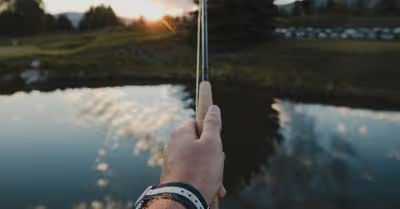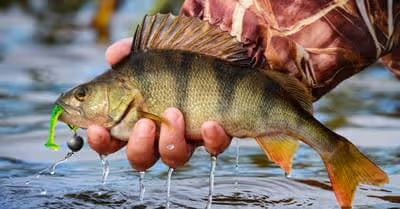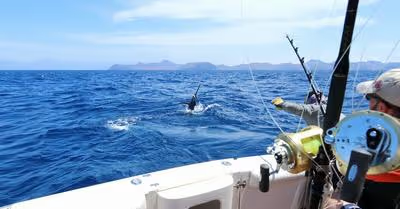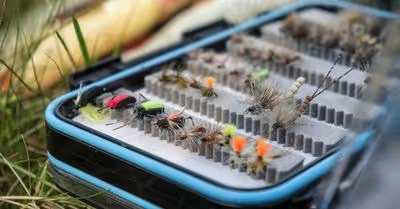Table of Contents
Smaller VS larger hooks
The main advantage of a smaller hook is that it is harder for a fish to see. A bigger hook might also not fit into the mouth of a smaller fish. You can also cast a smaller hook further, and it won't be pushed around by the current very much.
On another level, you might not want to catch any small fish. Go with a larger hook if you only want to catch bigger fish.
You can also have trouble catching some fish with smaller hooks. Smaller hooks can easily tear out of the mouth of a larger fish.
Fishing hook sizes
Fishing hook sizes are a bit less straightforward than they should be. A 9/0 is a large hook. An 8/0 is smaller than that, a 7/0 smaller still, and so on down to a 1/0. At first, this is very straightforward.
However, the next size smaller than a 1/0 is a 1. A 2 is then smaller than a 1, a size 4 is smaller than a 2, and so on.
For larger fish hook sizes(9/0 down to 1/0), larger numbers mean larger hooks. For smaller hooks (1 down to 2 and so on), larger numbers mean smaller hooks instead.
A size 8 hook is a small hook, and you can find size 20 hooks and smaller. Sizes are also not precise measurements - a hook categorized as smaller may be a bigger hook. Different companies have somewhat different standards for their measurements.
Parts of a hook
Anyone getting into fishing should know some basic terms, such as the parts of a fishhook. It will be easier to buy the right hooks if you have some basic knowledge.
- The point: This is the most obvious. The point is the sharp end of the hook, which pierces the fish's mouth.
- The eye: This is the metal ring that you tie your fishing line to. Different types of eyes exist, and they have to be strong enough for the fish you are catching.
- The shank: This is the piece of metal running downward from the eye toward the bend. This is the longest part of the hook and must be too strong to break as well.
- The bend: This is the part where the hook curves back up towards the point.
- The throat: This is the piece of metal that runs up from the bend towards the point.
- The barb: This is a small spike that points in the opposite direction from the point, which prevents the hook from coming loose.
You cannot use barbs everywhere. Barbs are harmful to fish, so if you are doing catch and release, it might not be legal to use barbed hooks in your lake or river. If you are fishing without barbs, circle hooks are a smart choice - it is hard for a fish to escape from a circle hook even if it is not barbed.
Don't allow any slack in your line, even with a barbed hook. When reeling in a fish, make sure you keep the line tight the whole time.
If you let the line go slack, the hook may pull out of the fish's mouth. Barbs are not always enough to prevent this.
Length, gauge, and gape
Gauge is how thick the metal is. Fish hooks vary a lot in thickness - from fine to heavy, 2X heavy, and so on.
The length refers specifically to the length of the shank. Gape refers to how far the hook is from the shank, or in other words, how wide the hook is.
Types of fishhooks
Anyone who has been inside a bait shop before how many types of hooks there are. There are countless uncommon kinds and more than ten common kinds.
J Hooks
A J hook is the simplest and most common type of hook. The hook is shaped like the letter and only has a single point.
J hooks catch the fish's mouth when they try to pull away from the bait. With the right J hook, you can catch any fish, so J hooks have always been popular. A J hook is a general-purpose hook that works for many different kinds of fish.
Since fish hooks vary so much, not every J hook is the same. The hooks can twist and, in other ways, vary from the usual standard while still being J hooks.
If your J hook is too large, it won't fit into the fish's mouth. You have to set the hook properly to have any luck with a J hook.
Circle hooks
At first glance, a circle hook looks like it must be inferior to a J hook. Since the point curls back towards the shank, the hook looks like it would have trouble catching anything.
However, a fish will swallow a circle hook, and the hook will catch it as the fish turns away. If the circle hook lodges fully in the fish's mouth, the fish cannot pull away.
An advantage of circle hooks is that they will not snag on things that would catch a J hook. The point of the hook curls inwards, so there is less risk of snagging.
Treble hooks
Treble hooks have three points rather than one point so that they will catch fish more easily. If one point is not facing in the right direction, another point will be.
While treble hooks do piece fish easily, they have trouble piercing fish deeply. A fish may be able to pull away when you try to reel it in.
Snagging hooks
Snagging hooks will catch on the side of a fish as it swims by. The fish does not have to bite a snagging hook.
In situations where the fish aren't going to bite, snagging hooks are the only way. Snagging hooks are similar to treble hooks but larger.
Weedless hooks
Weedless hooks are for fishing in thick vegetation. If you are fishing in a lake or pond where there are weeds everywhere, you need a hook with wire bristles to keep it from snagging.
King Kahle Hook
A King Kahle Hook is excellent for large bait and large fish. The hook's twist will prevent the bait from coming off. King Kahle Hooks are otherwise similar to J-hooks.
Use the right bait for the hook
Some hooks are poorly suited to some types of bait. If you are fishing with worms, you need large hooks, as the worm will slip off a smaller hook.
What are snelled hooks?
Snelled hooks have a fishing line attached to them when you buy them. You can attach this short line to your main fishing line.
The advantage of snelled hooks is that you do not have to worry about tying the line to the eye the wrong way. Beginners might want to use them, as you might not get the knots right if you are just starting.
Are the different types of points relevant?
Yes, different types of points are better in different ways. If you want as powerful of a point as possible, get a hook with a knife-edge point. A knife-edge point will penetrate any fish easily.
If you are doing catch and release, you need something less harmful than a knife-edge point. Needle points and spear points do much less damage. If you are having trouble with fish that fight back energetically, you might use a rolled-in point.
Are more expensive hooks higher quality?
Yes, better hooks tend to be more effective. More expensive hooks are not a waste of money. Good hooks are sharp and bend rather than break.
Quality is much more important if you are catching bigger fish. With smaller fish, you can get away with using cheaper hooks.
What do I do if fish are spitting my hooks out?
If it feels like you have caught a fish for a moment, but then the line goes slack, and the fish gets away, the fish was able to spit your hook out.
You might need a sharper hook - otherwise, the fish can notice it and spit it out before the point goes deep enough. You might also need to work on your hook setting technique.
Can you lose a fish if you fight it too hard?
Yes, if you struggle too hard, the hook will pull out of the fish's mouth. Pull the fish in a little more slowly, don't fight it as hard as possible. The hook will pull out if you are too aggressive.
Another possibility is that your hooks are too small for the fish you are fighting. An undersized hook will tear out of a bigger fish's mouth.
Recent Articles
















